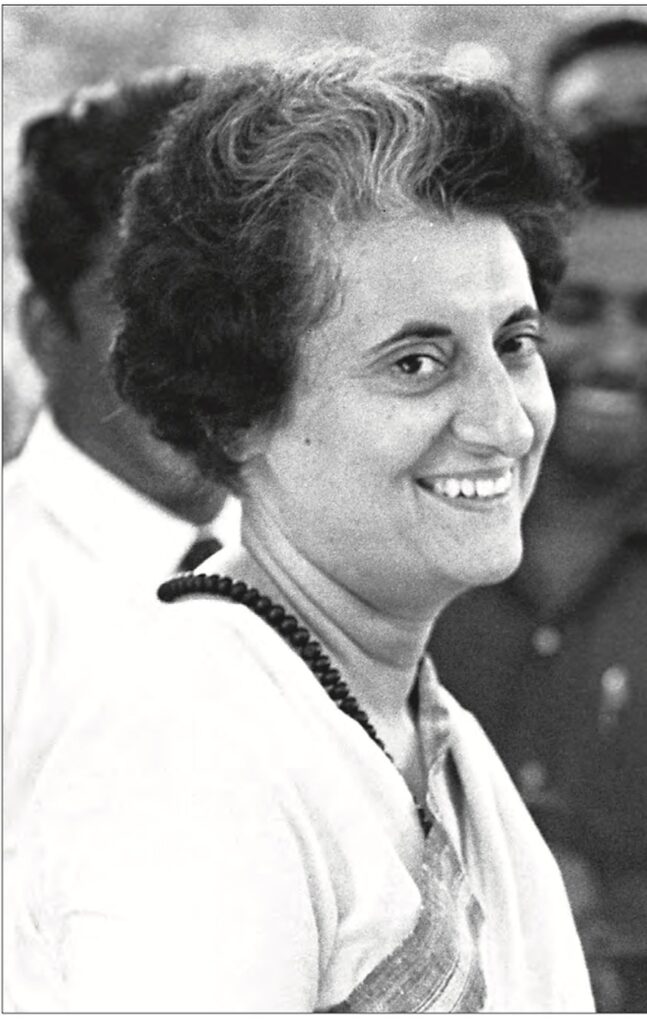She was the first Prime Minister I encountered as a news reporter. This was barely six months into my job and I was very raw, but my editor packed me off to Assam, quite the hotbed of ethnic strife at the time. Luckily, there were senior journalists from other newspapers who took me under their wing.
We heard one day that there was trouble somewhere—and learnt, as we set out, that all public vehicles had been commandeered by the administration. Some of us decided to walk to the spot. This was Nellie in central Assam in the immediate after- math of the horrid massacre of 1983.
We saw bodies floating in the Brahmaputra and strewn around a large area—it was my first experience of blood and gore. We rushed to the nearest police station. The massacre, which took 2,194 lives in 14 villages (that’s the official count; unofficial estimates ran over 10,000), shook the nation.
Two days later, the then prime minister Indira Gandhi arrived at the refugee camp in a helicopter. Overawed by her pres- ence, I was hovering around the steps of the building where she was to take stock of the situation with officials; all of a sudden I found myself face to face with her. As I tried to quickly step out of her way, a woman from the refugee camp hurled herself onto her and burst into heart-rending sobs.
It was so sudden that for a moment Mrs Gandhi reeled back from the impact. But she recovered quickly and then held the woman to herself: “Ro mat, behan, ro mat. Main hoon na; main hoon aapke liye.
(Don’t cry, sister. I’m here for you). ”The woman’s sobs wouldn’t cease.
Nor would my hands stop trembling as I fumbled with my camera. The enormity of the moment was not entirely lost on me but the damn hands wouldn’t stop shaking. As the woman clung to her, Mrs Gandhi kept stroking her head, but from a corner of her eye she also caught me struggling to take a photograph.
And, then, suddenly said to me: “Hurry up now, girl! I don’t have all day, you know!” I trembled even more. At a glance from her, one of her security men stepped forward, snatched my camera, aimed it at Mrs Gandhi and the still sobbing woman and took the shot for me. Mrs Gandhi looked relieved, but she also glanced at me with a little concern before moving away.
It took me a while to process this act of kind- ness for a rookie reporter, in a situation where it possibly was an annoying distraction for her or at the very least a low priority. I’ve had many flashbacks of that moment, especially when I’ve seen the security cordon around some later prime ministers and their impatience with reporters who try to get close. A year later, Mrs Gandhi flew into Mumbai, ostensibly to attend a party event.
I was one of the few reporters who were told about her itinerary by the Bombay Congress president (Murli Deora). A couple of us decided to wait on the road (security arrangements were not so paranoiac those days) as she visited the family of Ravindra Mhatre, the Indian diplomat, who had been kidnapped and killed in the UK by JKLF (Jammu and Kashmir Liberation Front) militants. Deora, who had accompanied her, later confided that the Prime Minister had apologised to Mrs Mhatre for not being able to save her husband’s life, begged her forgiveness and asked her if she understood that she (Mrs Gandhi) could really not have released Maqbool Bhat, the terrorist whose freedom the terrorists had demanded in return for Mhatre’s release.
Then she made a promise to Mrs Mhatre—her two young children, still in school, would be taken care of until they could stand on their own feet. Not by the government, but by Mrs Gandhi herself, at her own expense. Whatever course they wished to pursue, no matter the cost, she’d said, Deora recalled for us—and then insisted that we didn’t report it because Mrs Gandhi did not want any publicity.
No show, no grand-standing, no desire to make political capital of a human gesture. Likewise when Bhat was hanged at Delhi’s Tihar jail, she preferred to keep it quiet. On the day Mrs Gandhi visited the Mhatres, a lone woman also stood by the road, garland in hand.
Mrs Gandhi’s cavalcade drove past her but then came to an abrupt halt. She got out of her car and walked back to the woman despite protests from her staff. “She must have been waiting for long in the hot sun.
I have to see her,” Mrs Gandhi apparently told them. ” But it turned out the woman was a party functionary, and Mrs Gandhi now saw red. “Don’t do this again,” she admonished the woman with the garland.
“As a party worker, you could have met me at many places. It’s those who do not have access who must be heard. ”It may have seemed like a rejection at the time, but the woman at the receiving end of that lesson dined out on the encounter for years to come.
.
From: nationalheraldindia
URL: https://www.nationalheraldindia.com/india/19-november-1917-31-october-1984-the-measure-of-a-prime-minister
